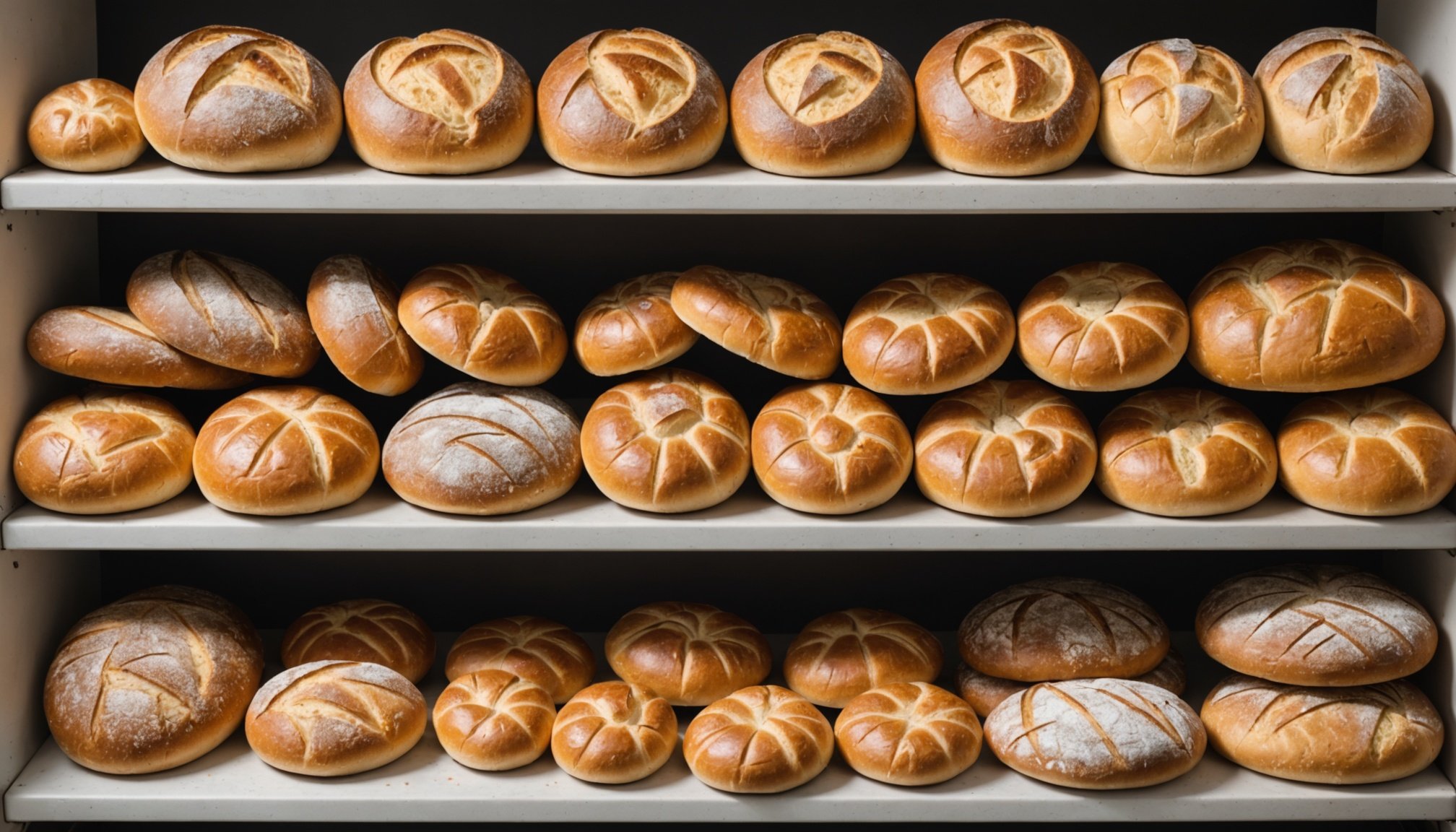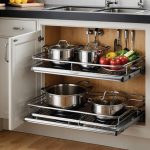Importance of Efficient Bread Storage
Understanding the importance of freshness is crucial when considering bread storage methods. Bread, when not efficiently stored, rapidly loses its texture and flavour, leading to unnecessary waste. Efficient storage techniques tailored to different bread types can make a significant difference here.
Bread storage methods have a direct impact on freshness. For example, using a cloth bag instead of a plastic bag can allow the bread to ‘breathe’, reducing the chances of mold while maintaining crustiness in loaves such as baguettes. This minimizes waste by extending the bread’s shelf-life.
Also to discover : Mindful eating made easy: creative kitchen seating ideas to enhance your dining experience
An overlooked aspect of efficient storage is its environmental implications. With large quantities of bread waste contributing to landfill issues, employing better storage techniques aids in waste minimization. By maximizing the lifespan of bread, fewer resources are consumed in production, and the environmental footprint is reduced.
Moreover, adjusting methods based on specific bread types—like using a bread box for sourdough or tight-sealing containers for whole grain—supports greater efficiency. Adapting storage spaces in kitchens to better accommodate these strategies can prevent stale bread and reduce overall waste.
Also to see : Transform Your Kitchen’s Atmosphere: Explore the Health Benefits of UV-C Air Purifiers for Removing Dangerous Pollutants
Types of Bread and Their Storage Needs
Understanding the storage needs of different bread types is essential for preserving quality. Each bread variety possesses unique storage requirements depending on its characteristics.
Sourdough Bread
Sourdough’s chewy texture and crisp crust demand specific conditions to maintain freshness. Store in a breathable cloth bag to allow sufficient airflow, preserving the crust while guarding against moisture. Keep at a stable room temperature to extend its shelf-life for about 4-5 days post-baking.
Whole Grain Bread
Whole grain bread, rich in natural oils, requires careful management to prevent it from going stale. An airtight container helps lock in moisture while keeping it away from light and heat sources. Ideal storage temperatures range between 15°C-20°C. Whole grain loaves generally last up to a week.
Baguettes
Baguettes demand unique attention to uphold their iconic crustiness. A paper or cloth bag facilitates airflow, preventing a soggy crust. They’re best consumed shortly after cutting, with a typical lifespan of just 1-2 days due to rapid staling. Ensuring storage at a mild temperature preserves both texture and flavour.
A consideration of bread type alongside its storage needs is vital for maximizing freshness and minimizing waste.
Best Storage Containers for Bread
Finding the right bread storage containers is key to maintaining freshness for various bread types. An airtight container can be crucial for breads like whole grain, as it locks in moisture while protecting against heat and light. On the other hand, non-airtight options such as bread boxes or cloth bags, allow breads like sourdough and baguettes to breathe, preserving the crust while preventing mould.
-
Plastic Bags: These are convenient for short-term storage but can cause condensation, potentially leading to mould. Not ideal for crusty breads as they make them soggy.
-
Bread Boxes: Made from materials like wood or metal, bread boxes balance moisture levels and air flow, suitable for softer breads that don’t need airtight conditions.
-
Cloth Bags: Optimal for artisanal loaves requiring airflow. They help maintain moisture balance and crust while being an eco-friendly solution.
Material choices impact bread quality. Wooden boxes offer natural insulation, while glass containers keep bread visible but must be away from light. Selecting the right container depends on bread type and environmental conditions to effectively prolong freshness.
Optimal Conditions for Bread Storage
Creating ideal conditions for bread storage plays a pivotal role in retaining its freshness. Achieving the right balance is crucial. Here’s how different conditions affect your bread:
Room Temperature Storage
Storing bread at room temperature can be a suitable option for short-term needs, especially when kept in a dry, cool place. Ideally, room temperatures should stay between 15°C to 25°C. Avoid direct sunlight or heat sources to prevent staling and spoilage. Maintaining low humidity levels helps keep the texture intact and prevents mold growth.
Refrigeration
Refrigerating bread may seem handy for extending shelf life, but it often accelerates staling due to low humidity levels, causing the bread to lose its moisture quicker. However, refrigeration might be beneficial for loaves prone to mold, like rye or sourdough, when wrapped tightly to control moisture levels. Typically, the ideal conditions involve keeping the bread at a temperature just above freezing.
Freezing Techniques
Freezing is an excellent strategy for long-term preservation. For optimal results, freeze bread at temperatures below -17°C. Wrap the bread in aluminum foil or a plastic bag to protect against freezer burn. When thawing, allow the bread to rest at room temperature until fully defrosted to maintain freshness and texture.
Innovative Bread Storage Techniques
Maximising kitchen space, especially in small apartments, requires innovative bread storage techniques. One such method is the use of vacuum sealing, which efficiently removes air, extending shelf life and maintaining bread quality. This approach is particularly useful for sliced varieties, ensuring they remain moist and fresh.
Utilising space often overlooked, such as beneath shelves or within remodeled kitchen drawers, can significantly enhance storage efficiency. Compact, stackable containers allow for multiple loaves while minimising clutter, making them ideal for limited spaces. Modern kitchen design often incorporates these elements, using adaptable shelving to accommodate various loaf sizes.
Real-life examples of innovative storage include using a combination of breathable cloth bags with vacuum-sealed containers, giving versatility to bread types prone to differing freshness requirements. This hybrid technique cleverly marries the benefits of airflow and airtight conditions, demonstrating practical efficiency strategies.
Technology also introduces smart solutions—apps that notify when bread is nearing expiration or integrated kitchen systems that adjust humidity for optimum bread preservation. Creative and practical thinking in bread storage can greatly improve both the longevity and quality of your baked goods. Implementing these ideas could transform your kitchen into an example of efficient, modern living.
FAQs on Bread Storage
For anyone perplexed by bread storage practices, these FAQs address your queries.
How long does bread really last?
Typically, store-bought bread is designed with preservatives, lasting 5 to 7 days at room temperature. In contrast, homemade bread, free of preservatives, lasts around 2 to 3 days. This storage difference impacts the shelf-life considerably.
Can I store bread in the fridge?
While refrigeration isn’t ideal due to accelerated staling caused by low humidity levels, it can slow mold growth for some bread types. Wrap in an airtight bag to minimise moisture loss. It’s useful for breads like rye or sourdough but a poor choice for those prioritising a fresh, soft texture.
What’s the best way to slice bread?
Slice bread using a serrated knife after it’s cooled to prevent tearing. It’s crucial to cut only what you’ll consume immediately, preserving the rest’s freshness longer. By slicing wisely, you minimise dry, stale pieces, maximising your enjoyment and minimising potential waste.
Addressing these common questions ensures your bread remains fresh and enjoyable, ultimately enhancing your storage strategies.
Lifecycle Management of Bread
To effectively manage the bread lifecycle, it is crucial to employ methods that minimise waste and maximise the consumption management strategies. Utilizing creative approaches ensures bread stays usable longer.
Tracking Bread Freshness
Monitoring freshness is key to efficient consumption. Labelling bread with purchase or bake dates aids in tracking shelf life, ensuring you consume it promptly. By regularly checking for signs of staling or mould, you can better manage freshness and avoid unnecessary waste.
Recipes to Use Stale Bread
Rather than discarding stale bread, transform it into delicious dishes. Stale bread can be repurposed into croutons, bread pudding, or a savoury breadcrumb topping. These creative recipes not only extend the usefulness of bread but also reduce waste and provide tasty culinary experiences.
Sharing or Donating Leftover Bread
For leftover bread that exceeds home use, consider sharing or donating. Community initiatives, food banks, and social media groups often welcome contributions of unused bread. By doing so, you help reduce wastage and support those in need, turning potential waste into a valuable resource for others.
Visual Guides and Infographics
The incorporation of bread freshness visuals can significantly enhance your understanding of effective storage techniques. Structuring information visually through infographics helps simplify complex ideas, catering to both novices and experienced bakers looking to optimize bread storage. These visuals can distinctly highlight storage nuances aligned with different types of bread and their respective shelf-lives.
Examples of storage infographics might include breakdowns of ideal temperature ranges, and moisture levels, or step-by-step guides for implementing storage practices. They often employ clear, concise visuals demonstrating airtight vs. non-airtight container benefits or highlight specific strategies for preventing staling. Infographics may also suggest environmental benefits, showcasing how efficient storage reduces both waste and your carbon footprint.
Creating your own visual storage plan can be remarkably helpful. Start by identifying your regular bread consumption patterns and common storage mistakes. Illustrate your solutions—highlight optimal storage conditions or container choices. Simplicity and visual appeal are key: a well-designed guide encourages ongoing adherence to best practices, creating a more effective and enjoyable bread storage regimen. This approach clarifies information, helping to form sustainable habits that ensure maximum bread freshness.











